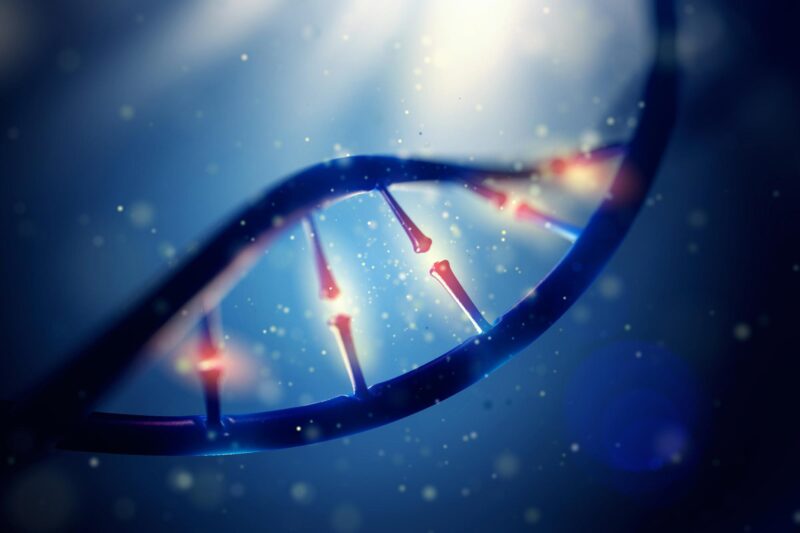
Les scientifiques ont localisé une zone du génome de la souris où la variation génétique est associée à des différences dans le taux de mutation entre les individus.
Cette découverte soutient la théorie selon laquelle les différences génétiques entre les individus et les espèces peuvent affecter l’acquisition de mutations.
Chaque organisme naît avec quelques mutations dans son génome qui diffèrent génétiquement de ses deux parents. De tels changements dans le code génétique d’un individu créent la diversité qui permet à la nature de sélectionner les traits avantageux qui conduisent à l’évolution d’une espèce.
Le type de mutations et le rythme auquel elles apparaissent varient selon les individus et les espèces. Certains chercheurs pensent que des facteurs environnementaux sont à l’origine de la plupart de ces variations. D’autres pensent qu’une partie de cette variation a une base génétique qui pourrait également affecter la susceptibilité au cancer, car le cancer peut être causé par des mutations dans les cellules des organes concernés.
Une équipe collaborative dirigée par des chercheurs de University of Washington School of Medicine in Seattle now report they have located an area in the mouse genome where genetic variation is associated with differences in the mutation rate between individuals. Genetic variants associated with a particular trait are called alleles, hence variants affecting mutation rate are called mutator alleles.
“Our findings show that at least one mutator allele exists in nature, and that’s something we’ve been trying to demonstrate for a while,” said Kelley Harris, assistant professor of genome sciences at the UW School of Medicine.
Harris and her research colleagues report their findings today, May 11, in the journal Nature.

Authors of a May 11, 2022, Nature paper, A natural mutator allele shapes mutation spectrum variation in mice, meet via Zoom. They are: Abraham Palmer, Kelley Harris, Thomas Sasani, Robert Williams, Annabel Beichman, David Ashbrook, Lu Lu and Jonathan Pritchard. Credit: Kelley Harris Lab
To locate the mutator allele, the investigators sequenced the genomes of inbred mice. Scientists create such populations by mating brothers and sisters for many generations. The resulting mice have highly standardized genomes that make it easier to study genetic associations with complex traits.
For this study, the researchers sequenced inbred lines that had been created by mating two lines, called strains “B” and “D.” Many of these BXD offspring had genomes that were 50% B and 50% D but with these alleles randomly shuffled into different combinations.
The oldest inbred BXD lines were maintained in captivity for nearly 50 years. Although each line’s genome remained relatively stable, all acquired mutations and some lines acquired mutations faster than others. This difference in mutation rates made it possible for researchers to recognize alleles associated with a higher or lower rate of mutations. In particular, they found a region of the mouse genome that affects the rate of a specific mutation in which the DNA nucleotide cytosine (C) is swapped out for the DNA molecule adenine (A), a so-called “C-to-A” mutation.
The researchers found that the mice whose genomes accumulated C-to-A mutations at a higher rate tended to have a segment of DNA on the fourth chromosome that was inherited from the D line.
“The mice that had an allele from the D parent at this one place on chromosome four accumulated C-to-A mutations at a rate 50% higher than those who inherited that locus from the B parent,” Harris said.
The region associated with the higher mutation rate is known to contain 76 genes, Harris said. A subsequent analysis to see which gene might cause the higher mutation rate led them to a gene called Mutyh.
Mutyh encodes a protein that plays a role in DNA replication and repair, and in humans is associated with a colorectal cancer syndrome. Harris said they could not rule out the possibility that other nearby genes aren’t playing a role in the increase rate of C-to-A mutations in these mice, but Mutyh’s link to cancer in humans makes it the prime suspect.
“Our findings add weight to the theory that natural mutator alleles underline variations in mutations seen in humans and show that they can been mapped with model organisms such as the mouse by using our approach,” Harris said.
Reference: “A natural mutator allele shapes mutation spectrum variation in mice” 11 May 2022, Nature.
DOI: 10.1038/s41586-022-04701-5
The paper’s first author is Thomas A. Sasani, who was a postdoctoral student in genome sciences at the UW School of Medicine when he did the research. Sasani is now with Recursion Pharmaceuticals in Utah. Other authors include David G. Ashbrook, Lu Lu, and Robert W. Williams of the University of Tennessee Health Science Center; Annabel Beichman at the UW; Abraham A. Palmer of the University of California at San Diego; and Jonathan K. Pritchard of Stanford University.



